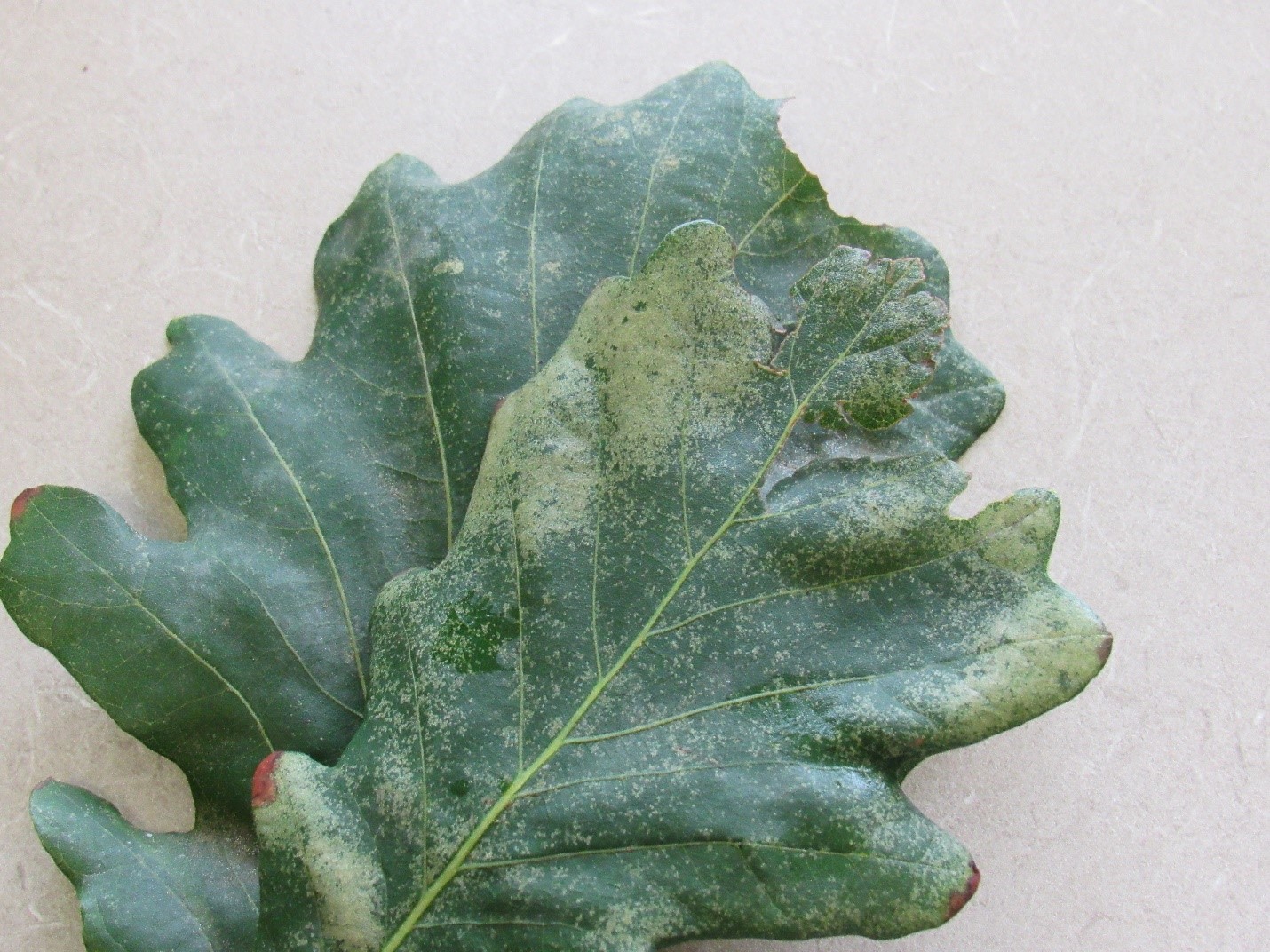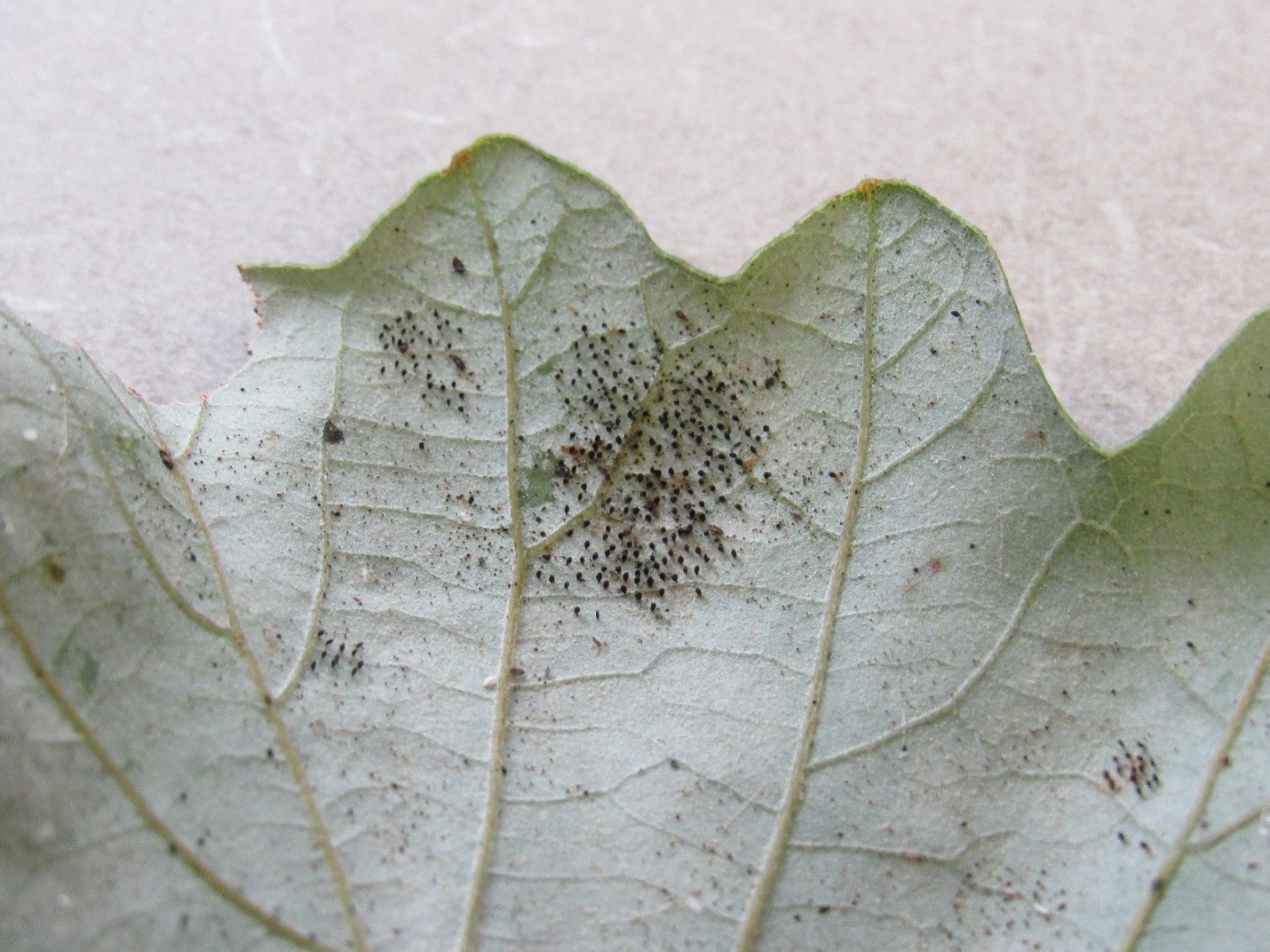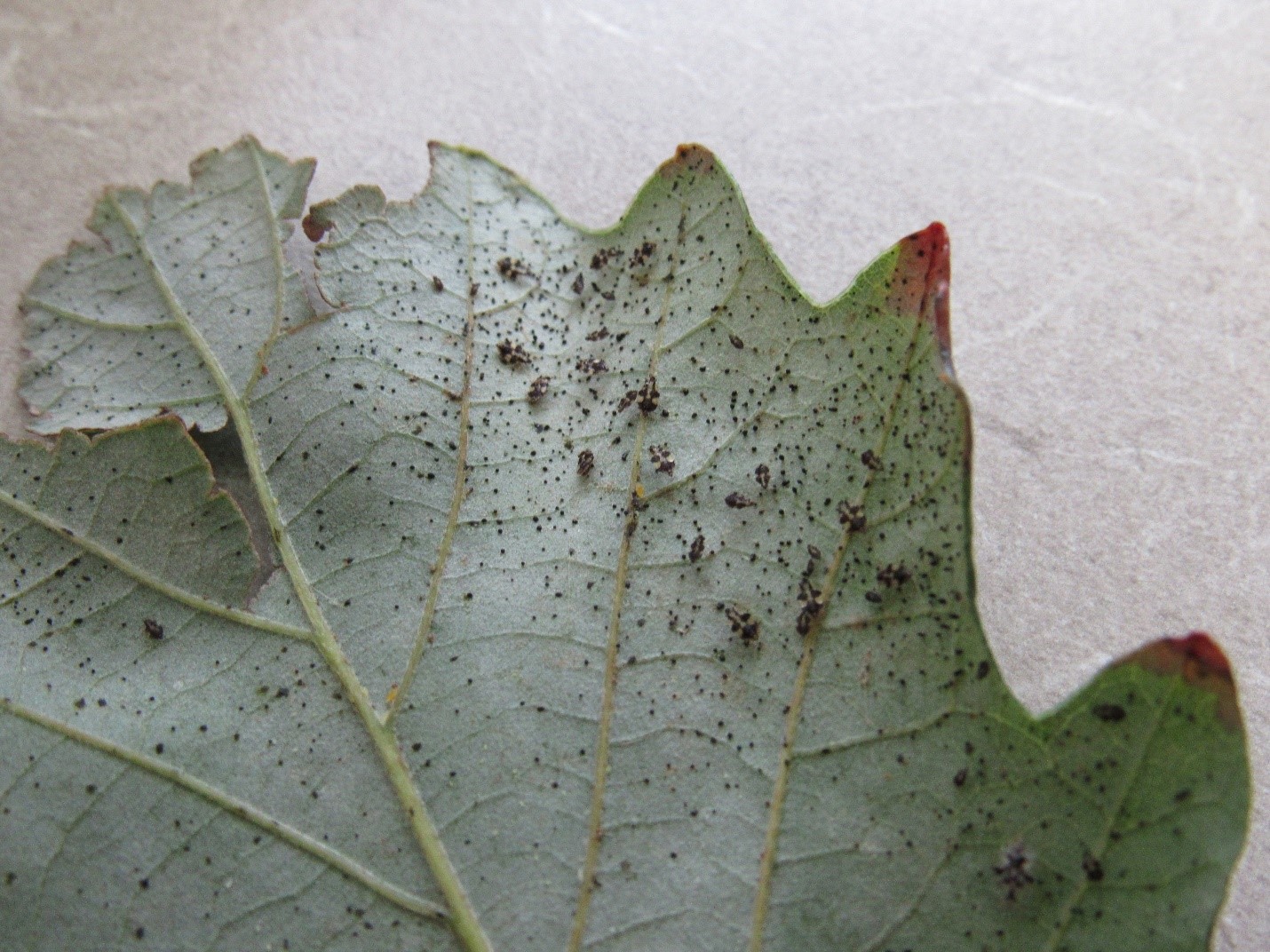Issue 10, August 30, 2019
Oak lace bug
It was stippling on the oak leaves (a visible insect feeding pattern) that caused me to stop and take a closer look. I thought it might be spider mites. Frass (insect excrement) in the form of black droplets on the underside of the leaf told me this was a phloem feeder. Then the culprits moved when I poked at them. They were oak lace bugs (Corythucha arcuata). Oak lace bugs are about 1/4 inch long with clear to white wings that are flat rectangular-shaped with dark brown markings that give the appearance a miniature cut square of lace.

Stippling on oak leaf resulting from Oak Lace Bug feeding
Per their name, oak lace bugs feed on oaks; there are separate lace bug species that attack sycamore, hawthorn, elm and even sunflowers. The feeding injury is caused by their piercing and sucking mouth-parts feeding on the phloem (the part of the plant that conducts sugars for plant growth). Lace bug eggs can easily be mistaken for frass because they are often covered in frass. The eggs are small black dots that can be differentiated from frass because they are arranged in a circular pattern. The nymphs are smaller than adults, darker and oval in shape and do not have wings. While young, the nymphs congregate on the underside of leaves. There are multiple generations per year and they overwinter as adults in protected locations like bark crevices.

Oak Lace Bug Eggs

Oak Lace Bug Nymphs
Although there was a very large population of these little creatures, in all their stages, controlling them with a spray is usually unnecessary. The trees were healthy and vigorous. It is common not to notice them until August or September. A daily water spray can be highly effective in reducing the population and can be repeated until the population is under control. The University of Illinois suggests treating them with horticulture oil, insecticidal soap, neem oil, pyrethroids or imidacloprid, although lace bug populations usually do not grow large enough to warrant treatment. Treatments are ideally applied in spring and early summer. Spraying in late summer or early fall will not correct damage that has already been done to the leaves. If the population is high enough to cause significant injury and oil or insecticidal soap treatment have not been effective, a spring treatment of pyrethroids or imidacloprid can be applied. Pyrethroids are contact insecticides and should be applied to the underside of leaves where lace bugs are present. Imidacloprid is a systemic pesticide that is taken up by the tree and delivered to the affected areas, so it must be applied early in the season for control. The chemical remains effective for two or three months after application.
Assassin bugs, spiders, predatory mites and lacewing larvae (lace bug = bad bug, lacewing = good bug) prey on these garden pests.
If you have significant lace bug populations this year, look out for stippling early next season while the populations are low and sprays may be effective. However, be sure to scout for the good guys and follow the directions on the label before spraying any pesticide.
Author:
Sarah Hughson